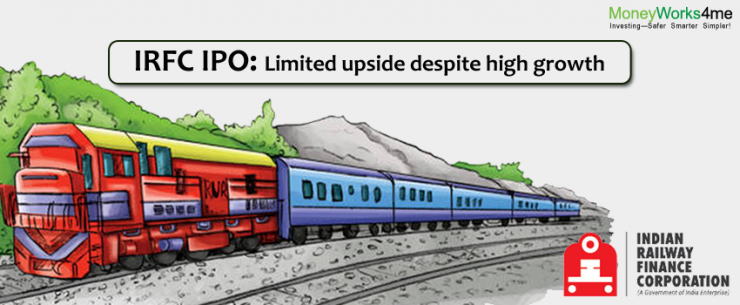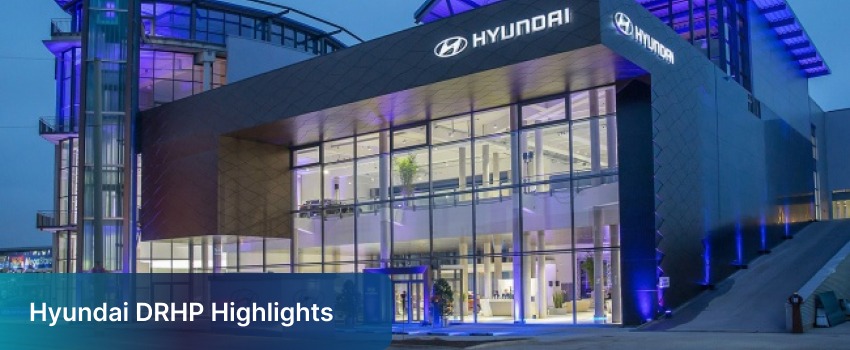IRFC IPO Details:
IPO Date: Jan 18 to Jan 20, 2021
Total Shares for subscription: ~177.4 Cr
IPO Size: ~Rs. 4,600 Cr
Lot Size: 575 shares
Price Band: Rs. 25-26/share
Market Cap: ~Rs. 24000 Cr
Purpose of IPO:
- Fresh Issue (Rs 1,500 Cr) to be utilized for augmenting equity capital base for meeting future growth requirements and general corporate purposes.
- Proceeds of Offer for Sale (Rs. 3,100 Cr) to be received by Selling Shareholder only (Govt of India)
Incorporated in 1986 by the Ministry of Railways (MoR), the Government of India, Indian Railway Finance Corporation (IRFC) is a wholly-owned public-sector undertaking. Its primary activity is to mobilise funds on behalf of the Indian Railways to finance its procurement of locomotives, passenger coaches, and wagons as well as to fund other railway infrastructure assets.
Apart from providing finance to the MoR, IRFC has provided loans to Rail Vikas Nigam Limited (RVNL), which is wholly owned by the MoR. IRFC is registered as an infrastructure finance company-NBFC (NBFC-IFC) with the Reserve Bank of India.
IRFC is strategically important to the MoR as it raises around 25-35% of the total funding requirement (plan outlay) of the Ministry.
IRFC’s gross NPA percentage was nil as on December 31, 2019 (nil as on March 31, 2019) on account of its full exposure to the MoR or its controlled entities and the timely recovery of receivables. As the company’s entire exposure is to the MoR, its asset quality is likely to remain strong going forward as well.
In Fiscal 2020, IRFC financed ₹ 71,392 crores accounting for 48.22% of the actual capital expenditure of the Indian Railways.
Strengths:
- Strategic role in financing growth of Indian Railways: IRFC has regular demand for loans which is favourable for its asset growth. For the last 3 years, IRFC asset under management has grown at a CAGR of 22% from 1,20,000 Cr in Mar’17, Rs. 2,66,000 Cr in Mar’20.
- Competitive cost of borrowings: Because IRFC belongs to GoI, and lends to GoI owned entities, the cost of borrowing is very low for IRFC. For the last 3 years, the cost of borrowings for IRFC was 6.74% to 7.25% p.a.
- Consistent financial performance and cost-plus model: IRFC charges a fixed interest rate for sourcing loans for MoR. It gets fixed spread in the range of 0.3% to 0.4% above its cost of borrowings. This helps it earn a Return on Equity of 10-12% annually.
Weakness:
- Exposure to Govt entities at competitive rates puts a cap on its RoE to cost of capital.
- If the company gets more demand for loans, it will have to frequently raise equity capital from the market as RoE is inadequate to fund > 12%-15% growth
MoneyWorks4me Opinion
IRFC is the government financing arm for railways. It funds various MoR projects with leases or loans. It helps in raising funds at competitive and charges a commission.
Firstly, IRFC is funding government infrastructure initiatives it will have to maintain a low rate of financing which puts a cap on its RoE upside.
Secondly, it will have to raise equity from the market for higher growth in assets under management. The internal growth rate of a company is limited to the RoE of a company. For IRFC since RoE is only 10-12%, at best it can grow at 12-15% CAGR (even if it increases its leverage).
The last 3-5 years’ annual growth indicates it has grown at 20%+. Maintaining the same growth run rate will need regular equity finance. Unless equity is raised at fair prices, it leads to equity dilution for existing shareholders.
PSU Banks and Financials tend to trade at depressed valuations from time to time which increases chances of higher dilution during every equity raising. Inspite of higher growth in AUM, the benefit will not accrue to shareholders.
We find that there are better PSU Financials available in a better position than IRFC, both on growth and RoE. Their growth is modest and doesn’t need frequent fund raising from the market. They also trade at a similar valuation as IRFC at Price to Book Value of 1x and dividend yield of 4-6% versus 1-2% of IRFC.
Recommendation: Because of low RoE, lending to government entities at the fixed spread, and risk of equity dilution during equity raising makes us worry about investing in IRFC.
| IPO Activity | Date |
|---|---|
| IPO Open Date | 18th Jan 2021 |
| IPO Close Date | 20th Jan 2021 |
| Basis of Allotment Finalisation Date* | 25th Jan 2021 |
| Refunds Initiation* | 27th Jan 2021 |
| A credit of Shares to Demat Account* | 28th Jan 2021 |
| IPO Listing Date* | 29th Jan 2021 |
* – Tentative Dates
What is IRFC IPO?
IRFC IPO is an IPO of ~178 Cr equity shares with a face value of ₹10 aggregating up to ₹4,600 Cr. The issue is priced at a price band between ₹25 to ₹26 per share.
KFintech Private Limited is the registrar for the IPO. The shares are proposed to be listed on BSE, NSE.
When IRFC IPO will open?
The IPO opens on Jan 18, 2021, and closes on Jan 20, 2021, between 10.00 AM to 5.00 PM.
What is the lot size of IRFC IPO?
The lot size is in the multiple of 575 with a minimum order quantity of 575 Shares.
How to apply for IRFC IPO?
You can apply for IRFC IPO online using either UPI or ASBA as a payment method. ASBA IPO application is available in the net banking of your bank account. UPI IPO application is offered by brokers who don’t offer banking services like Zerodha.
When is the IRFC IPO allotment?
The final allotment for IRFC IPO will be known on 25th Jan 2021, and if you get the allotment, shares will be credited to your Demat account by 28th Jan 2021.
When is IRFC IPO listing date?
The IRFC IPO listing date is not yet announced. The tentative date of the IRFC IPO listing is 29th Jan 2021.
Is it worth investing in IRFC IPO?
We find that there are better PSU Financials available in a better position than IRFC, both on growth and RoE. Their growth is modest and doesn’t need frequent fund raising from the market. They also trade at a similar valuation as IRFC at Price to Book Value of 1x and dividend yield of 4-6% versus 1-2% of IRFC.
We recommend avoiding, because of low RoE, lending to government entities at the fixed spread, and risk of equity dilution during equity raising makes us wary of investing in IRFC.
Know more: Indian IPO Historical Data 2021
If you liked what you read and would like to put it in to practice Register at MoneyWorks4me.com. You will get amazing FREE features that will enable you to invest in Stocks and Mutual Funds the right way.
Need help on Investing? And more….Puchho Befikar
Kyunki yeh paise ka mamala hai
Why MoneyWorks4me | Why Register | Call: 020 6725 8333 | WhatsApp 8055769463











